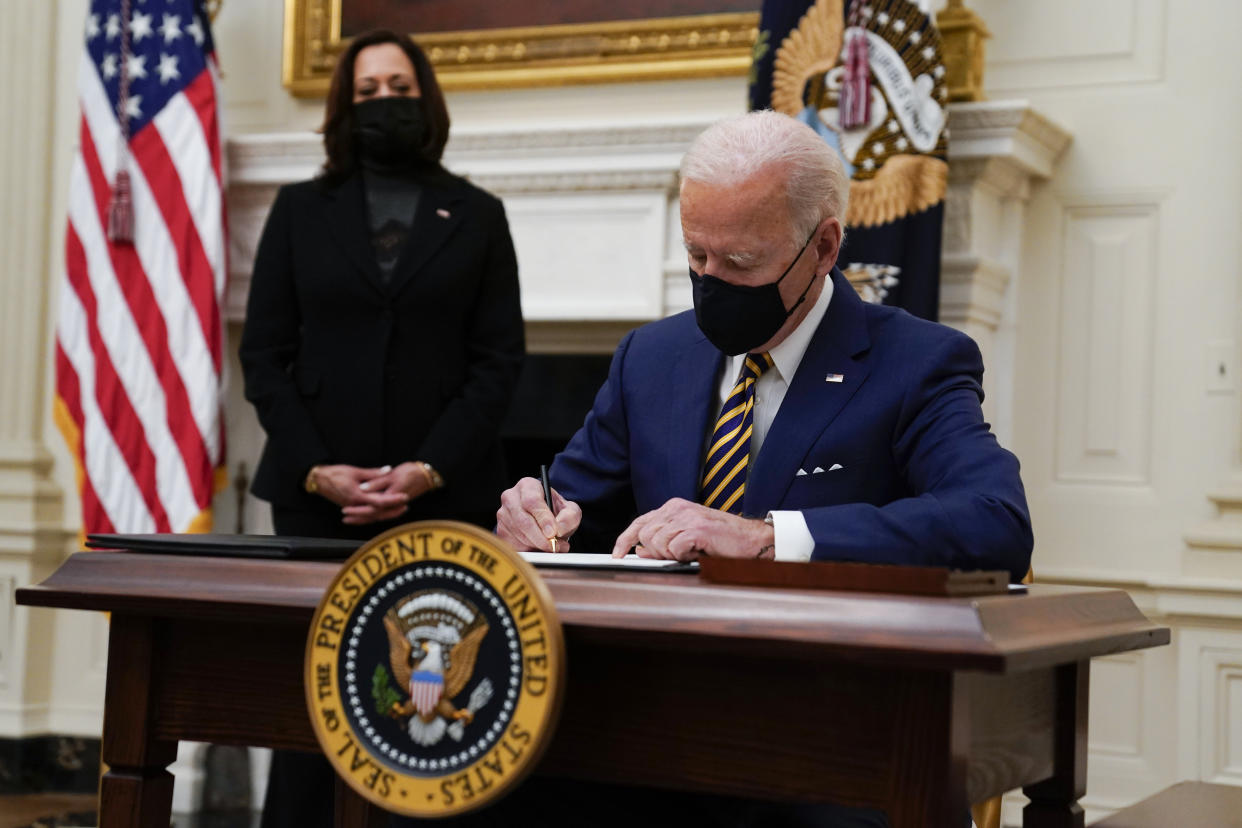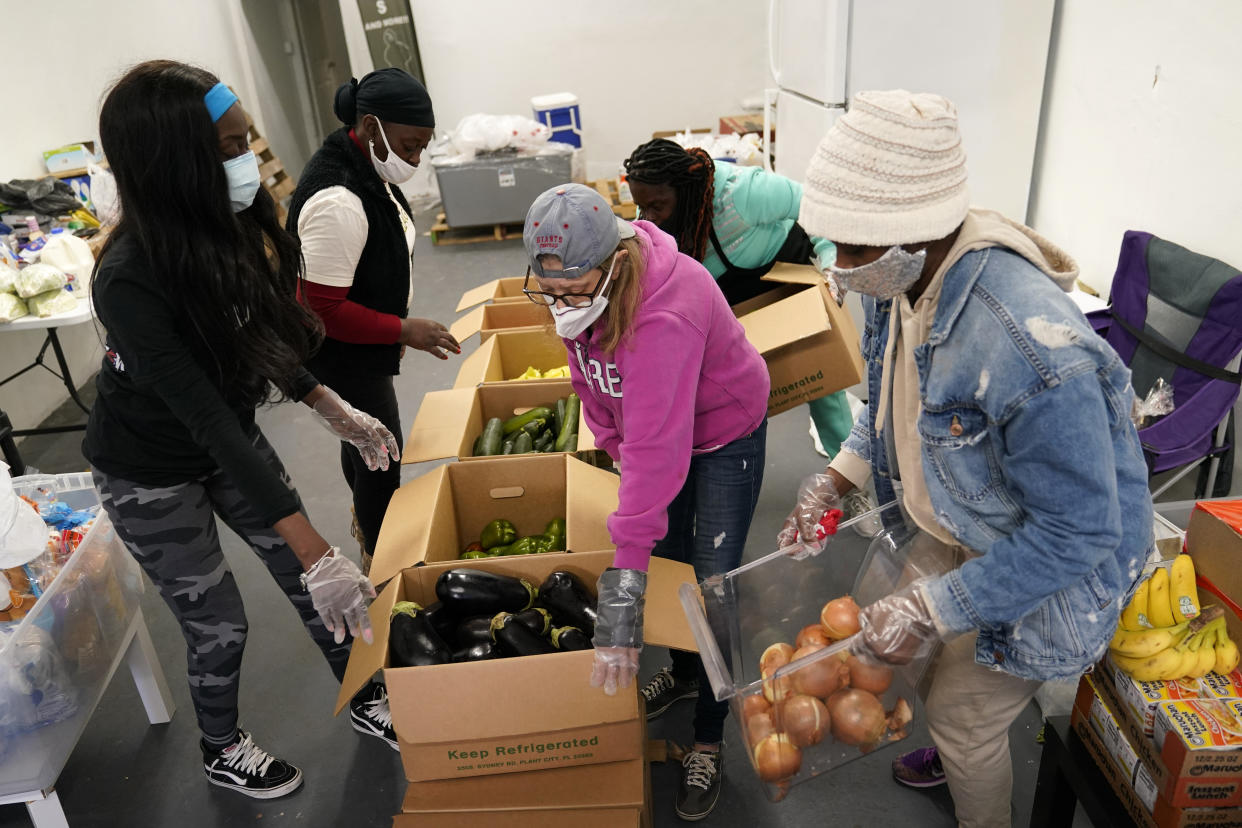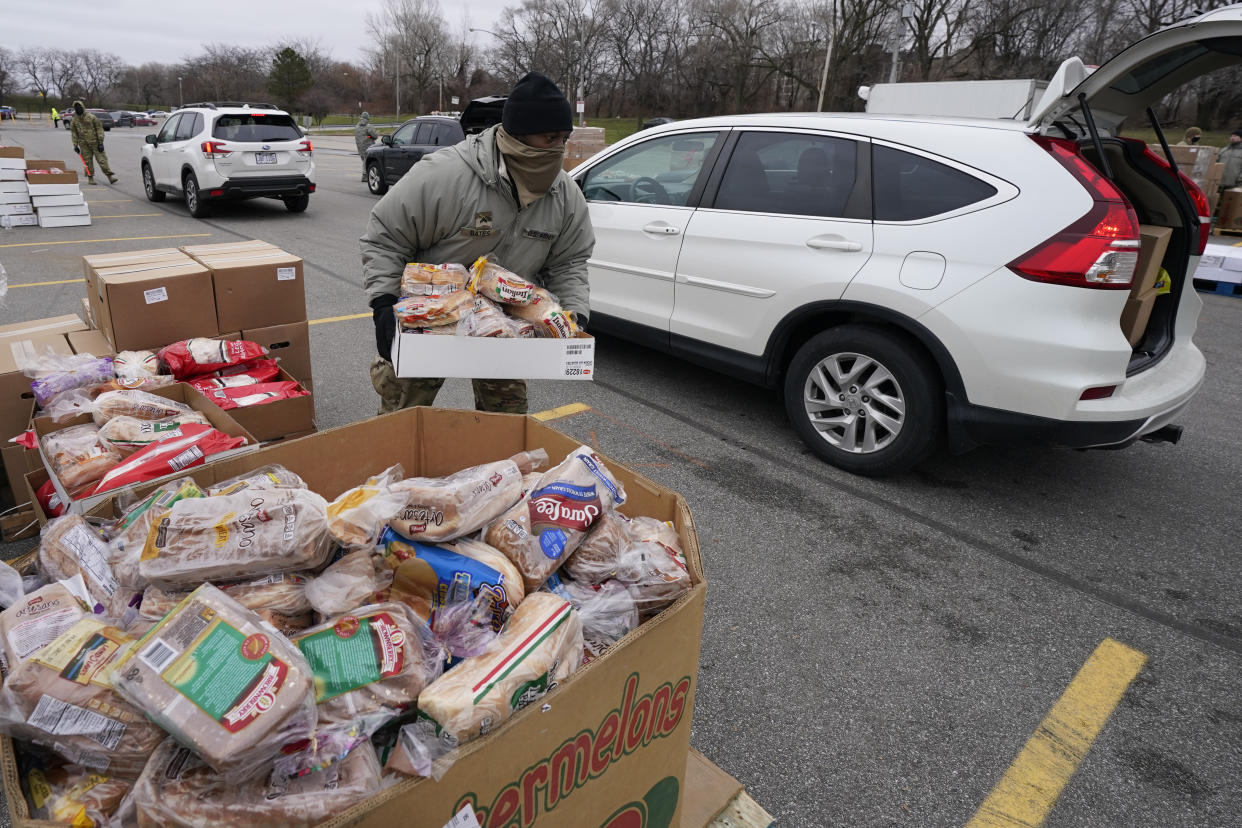Biden’s executive order will put ‘a huge dent’ in America’s food crisis
On his second full day after taking office, President Joe Biden signed an executive order that addresses the country’s most pressing economic needs, including measures to blunt the meteoric rise in food insecurity during the pandemic.
“I'm certainly predicting that it's going to make a huge dent in the food hardship that we've seen,” said Dr. Diane Schanzenbach, director of the Institute for Policy Research at Northwestern University, “especially when combined with the extension of the unemployment insurance benefits” under the latest stimulus bill.
Read more: Here's what to do if you haven't gotten your stimulus check
The share of U.S. adults who sometimes or often didn’t have enough to eat in the last seven days reached 13.7% — or nearly 30 million Americans — in the middle of December, the highest level since the pandemic began, according to the latest data available from the Census Bureau.

The three-pronged action from the executive order would specifically target the 12 million children who are also suffering from food scarcity.
“They are focused on low-income children because the losses that those children are experiencing during the pandemic cannot be won back,” Dr. Lauren Bauer, fellow in economic studies at the Brookings Institution, told Yahoo Money. “My big takeaway from this action is that the Biden administration’s priorities are sound.”
‘Able to purchase more and better quality food’
Under the order, the president is calling the U.S. Department of Agriculture to expand Trump-era measures of three key food assistance programs: Pandemic Electronic Benefits Transfer (P-EBT), SNAP, and Thrifty Food Plan.
Read more: Here's what's in Joe Biden's $1.9 trillion 'rescue plan' that could help your wallet
“As a result of the executive order I'm going to shortly sign, the Department of Agriculture will consider taking immediate steps to make it easier for the hardest-hit families to enroll and claim more generous benefits,” Biden said on Friday.

P-EBT, passed last March, provides support to families with school-age children who receive free or reduced lunch benefits, but now have to provide weekday meals in the absence of in-person education.
To date, the program provides up to $5.70 per child per school day and has been criticized by beneficiaries as difficult to navigate and claim benefits. The president is asking the USDA to increase the benefit by 15%, meaning a family with three or more children can claim over $100 every two months.
This means low-income families can “do extra meal runs and grocery runs and will be able to purchase more and better quality food,” Bauer said.
Read more: Parents brace for costly back-to-school spending as education stays virtual
SNAP provides relief and assistance to the lowest-income households. The benefits have been increased by 15% during the pandemic but some of the lowest-income households don’t qualify for the increase. Biden is requesting the USDA to expand the broader eligibility for the increase in benefits, so an estimated 12 million additional people would receive them.
President Biden is also asking the USDA to revise its Thrifty Food Plan that helps calculate SNAP benefits by updating it to reflect the current cost of nutritious food.
‘Families literally can't wait another day’

While the order is a step in the right direction, it’s unclear if the president’s actions are enough or whether he can do more without Congress, according to Schanzenbach.
“I wish we knew with certainty whether this will be enough,” she said. “It's not just food relief that helps bring down hunger.”
Read more: Coronavirus: How to apply for food stamps
After the Great Recession, it took nearly a decade for food insecurity levels to decline to more normal ranges, according to Bauer, who said it “takes a really long time for food insecurity rates to come down.” Bauer’s hope is that “we have seen the crest of child food insecurity numbers.”
Alleviating the nation’s hunger crisis comes with a combination of factors, Schanzenbach said, and she’s encouraged that the Biden team appears to be holistically focused on the mission of economic recovery.

Last week, Biden proposed a $1.9 trillion ‘rescue plan’ that addressed a multitude of factors, including food assistance, expanded unemployment benefits, housing protections, and another round of stimulus checks — all of which can help curb food scarcity directly and indirectly.
"We need to tackle the growing hunger crisis in America," Biden said on Friday before signing the executive order. “The American rescue plan provides additional emergency food and nutrition assistance for tens of millions of children and families to address this crisis, and families literally can't wait another day."
